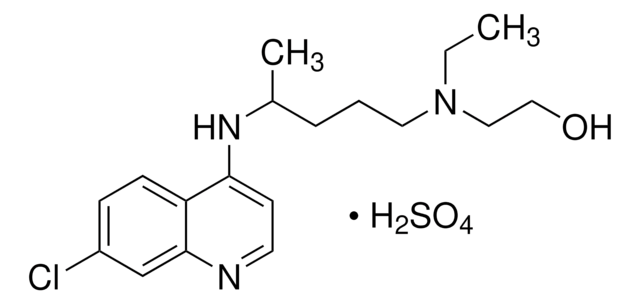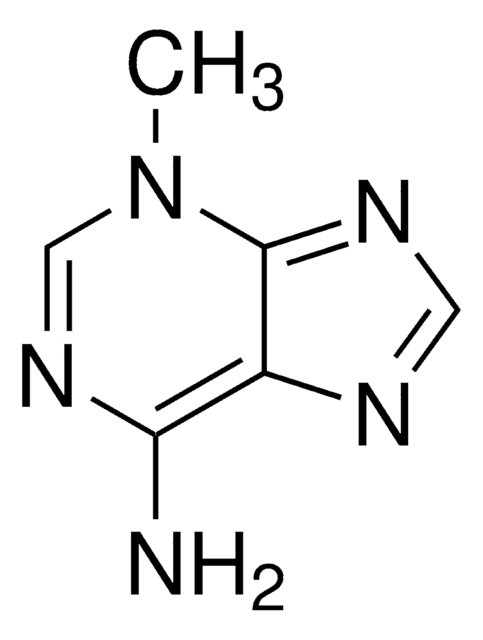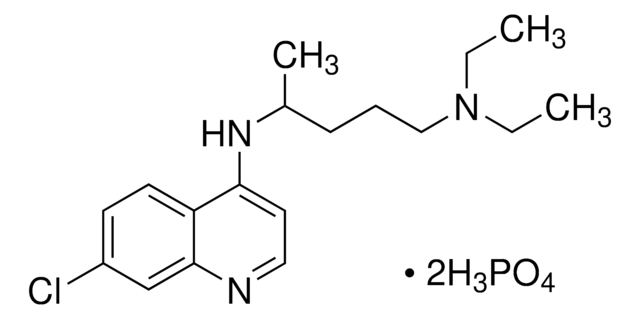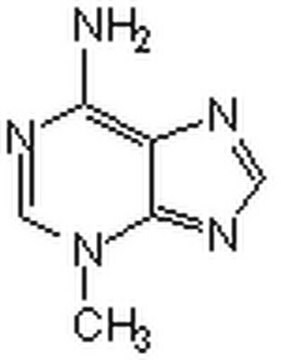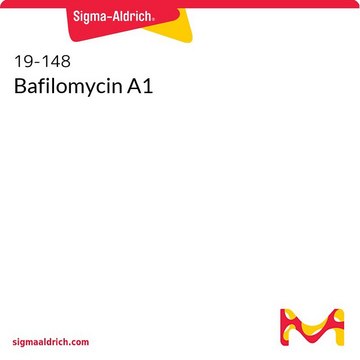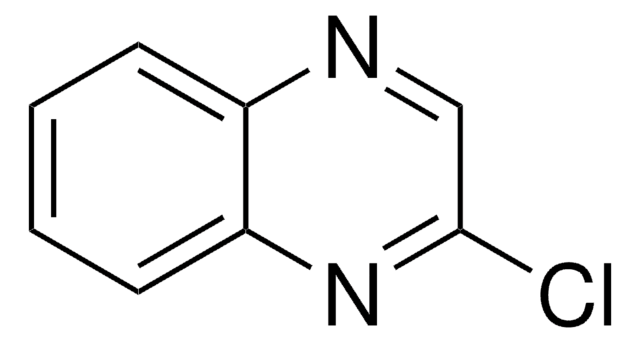C6628
Chloroquine diphosphate salt
98.5-101.0% (EP), powder or crystals, anti-malarial drug
Sinónimos:
N4-(7-chloroquinolin-4-yl)-N1,N1-diethylpentane-1,4-diamine diphosphate, N4-(7-Chloro-4-quinolinyl)-N1,N1-dimethyl-1,4-pentanediamine diphosphate salt
About This Item
Productos recomendados
Nombre del producto
Chloroquine diphosphate salt, powder or crystals, 98.5-101.0% (EP)
Quality Level
assay
98.5-101.0% (EP)
form
powder or crystals
mp
192-198 °C
antibiotic activity spectrum
parasites
mode of action
enzyme | inhibits
SMILES string
OP(O)(O)=O.OP(O)(O)=O.CCN(CC)CCCC(C)Nc1ccnc2cc(Cl)ccc12
InChI
1S/C18H26ClN3.2H3O4P/c1-4-22(5-2)12-6-7-14(3)21-17-10-11-20-18-13-15(19)8-9-16(17)18;2*1-5(2,3)4/h8-11,13-14H,4-7,12H2,1-3H3,(H,20,21);2*(H3,1,2,3,4)
InChI key
QKICWELGRMTQCR-UHFFFAOYSA-N
Gene Information
human ... ABCC1(4363)
¿Está buscando productos similares? Visita Guía de comparación de productos
Categorías relacionadas
General description
Application
Chloroquine diphosphate salt has been used :
- in in vitro antiplasmodial assays
- in transfection and infection assays
- in autophagy inhibition
- in differentiation of induced pluripotent stem (iPS) cells into cardiomyocytes
- in flow treatment of infected blood
Biochem/physiol Actions
Features and Benefits
signalword
Warning
hcodes
Hazard Classifications
Acute Tox. 4 Oral
Storage Class
11 - Combustible Solids
wgk_germany
WGK 3
flash_point_f
Not applicable
flash_point_c
Not applicable
ppe
dust mask type N95 (US), Eyeshields, Gloves
Elija entre una de las versiones más recientes:
¿Ya tiene este producto?
Encuentre la documentación para los productos que ha comprado recientemente en la Biblioteca de documentos.
Los clientes también vieron
Artículos
We presents an article on Autophagy in Cancer Promotes Therapeutic Resistance
Protein-based drug transporters are found in most tissues including liver, kidney, intestine, and brain. These transporters are particularly important in cancer treatment and multi-drug resistance research. Understanding the specific mechanisms of tumor cell transporters is becoming an essential aspect of chemotherapeutic drug design.
Contenido relacionado
Discover Bioactive Small Molecules for ADME/Tox
Chromatograms
application for HPLCNuestro equipo de científicos tiene experiencia en todas las áreas de investigación: Ciencias de la vida, Ciencia de los materiales, Síntesis química, Cromatografía, Analítica y muchas otras.
Póngase en contacto con el Servicio técnico
